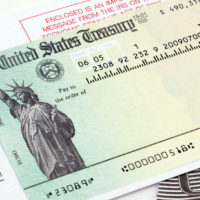What Does Your Credit Score Mean?
The Fair Isaac Corporation
Lending money is a risky business for moneylenders. But risk is also the cost of doing business. To hedge bets in deciding whether to issue a loan, the FICO Credit Score was adopted nationwide in 1989 as the standard gauge for a potential debtor’s creditworthiness.
In the days before credit scoring, applicants were often denied approval because there was no unbiased structure for evaluating financial histories objectively. In the 25 years since FICO’s acceptance, nationwide credit bureaus such as Equifax, Experian, and Transunion have seen the Fair Isaac Corporation’s measure of consumer credit risk grow into the industry standard in the United States and even went so far as to create a market competitor in 2006 called VantageScore.
Both FICO and VantageScore range from 300 to 850, but each company uses a different methodology to interpret the numbers. In either case, the higher the credit score number, the lower the risk to the lender. For the sake of this post, we’ll stick to FICO in this blog.
The Credit Check
First and foremost, lenders want to know the statistical likelihood that in the first 24 months of your repayment schedule, you will fall behind more than 90 days on your debt. To do this, your credit score is generated from a mathematical calculation of five variables.
- Payment history (35%)
- Amount owed (30%)
- Length of credit history (15%)
- New credit (10%)
- Credit mix (10%)
When a lender checks your credit score, the lower you rate, the more likely you pose a risk to the lending institution. Credit scores are consistently equal and objectively valid, as they reflect your likelihood to repay debt responsibly based only on your past credit history and current credit status.
But your lender’s appraisal of risk contains more than just your credit score, and your credit score only reveals information contained in your credit report. Your credit report does not show for example, your age, current income or the length of your employment.
On a scale of 300-850, data from these five categories are taken into account to determine your overall score. No one factor or incident determines it ultimately.
The Credit Score
A score of 720 or higher is generally considered excellent credit. A score between 690 and 719 is considered good credit. Scores between 630 and 689 are fair credit, and scores below 629 are poor credit.
- 850-720 Excellent
- 719-690 Good
- 689-630 Fair
- 629-300 Poor
A low credit score may not close all your paths to a loan or financing, but you might get higher interest rates or have to pay a cash deposit. Car insurance may cost more, and utility providers may require a security deposit. Landlords can use your score to decide your suitability as a tenant.
Lower interest rates and access to more credit products result from having a high credit score. Auto financing at zero percent or credit cards with zero percent introductory interest rates are typically reserved for borrowers with scores above 750.
Not every lender reports to all the three main national credit bureaus, and VantageScore has a slightly lower range than FICO. But these generic credit scores are used by many lenders and businesses to determine general credit risk. You can access your own generic score using the same formula across all three credit reporting agencies.
Self Credit Check
The Fair Credit Reporting Act of 1970 protects consumers from willful or negligent information on their credit reports. It gives every American the right to ask consumer reporting agencies for a free annual report. The three national credit reporting agencies are currently giving free weekly access to monitor your credit report until April 20, 2022.
Scams and online theft continue to defraud the market, and vigilance in checking your credit report and correcting any mistakes is critical. As a result, Experian, Equifax, and TransUnion will send you a free credit report, at your request, from their federally mandated website AnnualCreditReport.com. Enforcement is provided by the Federal Trade Commission, the Consumer Financial Protection Bureau, and an industry of private litigation.
After you complete an application and submit the secure personal confirmation data, you will receive a credit report of your choice. It is important to use the same score and the same report every time you request a personal credit check. If you don’t, you could wind up comparing apples to oranges.
Each credit report contains information on how to correct errors and dispute inaccurate or incomplete information. Be sure to check and update the following credit report details:
- Identity errors
- Incorrect reporting of account status
- Data management errors
- Balance errors
Empeople and You
Empeople has digital banking solutions to help you understand your FICO score and answer your frequently asked questions.
And if you think you have got what it takes, Empeople even has tips on how to improve your credit score all the way to 850.



